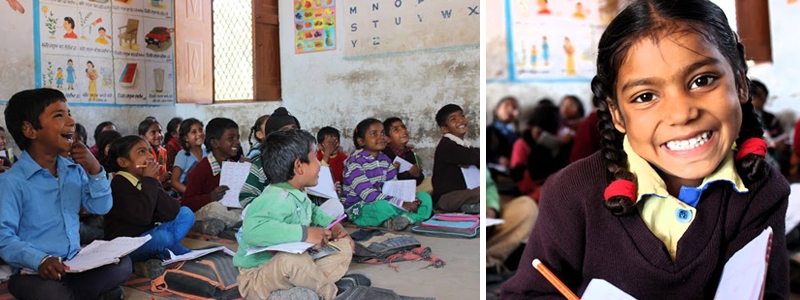Problem: The Indian education system faces a number of problems, such as an excessive focus on rote learning and memorization instead of encouraging understanding, critical thinking and problem solving. Test results remain a priority, while creativity is ignored. Many children drop out of school before completing five years of primary education, while those who stay in school learn little. After four years of studies, a significant percentage cannot read, write or do simple sums. The government’s main concern is the improvement of quantifiable factors such as enrollment and dropout rates, with the quality of education taking a back seat. Created in 1995, this non-governmental project aims to eradicate illiteracy and the cycle of poverty in India with low-cost, large-scale programs.

Solutions: The organization offers different types of educational programs and uses innovative teaching methods. One of these is the Camal (Combined Activities for Maximized Learning) system, where children are grouped according to their level of knowledge and not by age or grade. Teaching is based on activities that involve listening, speaking, reading and writing, and which can include either individuals or the whole classroom. To identify the level of the student, the teacher asks him or her to read a simple paragraph. If the student can manage this, he or she moves on to a longer text. If not, he or she can read words and letters instead. The possible classes are: beginner, letter, word, paragraph or story. The same type of test is used for mathematics, with the recognition of sums and numbers. The project is aimed at pre-school children, teenagers and young people. The younger children, for example, learn basic literacy and numeracy so that they can prepare for primary education.
The Read India program, which began in 2007, meanwhile, is aimed at improving the reading, writing and basic math skills of children aged 6-14 years. Community volunteers trained by Pratham form groups for activities on city streets. The Read India program currently provides an adapted model to state governments. Another program, Pratham Infotech Foundation, has been working since 2004 to facilitate the use of information technology (IT) in education and increase the digital literacy of students.
The project also acts in defense of children's rights, addressing the issue of child labor, which is all too common in India, through an outreach program that led to the formation of the Pratham Council for Vulnerable Children. In 2005, the organization created an annual education report, which illustrates problems and suggests suggested solutions for the future.
Outcomes: Children who take part in the project are more likely to attend primary school than others who did not have access to the program, and do better in school than their peers. The project began in the slums of Mumbai and spread throughout the country, and today the organization is the largest education sector NGO in India. It is present in 21 of India’s 29 states, and works with governments, local communities, parents, teachers, volunteers and members of civil society. Between 2013 and 2014, 46,000 volunteers have taken part in the project. It has won several awards, including the Wise Awards in 2012. The Read India has reached 33 million children per year in the two years it has been in operation.





